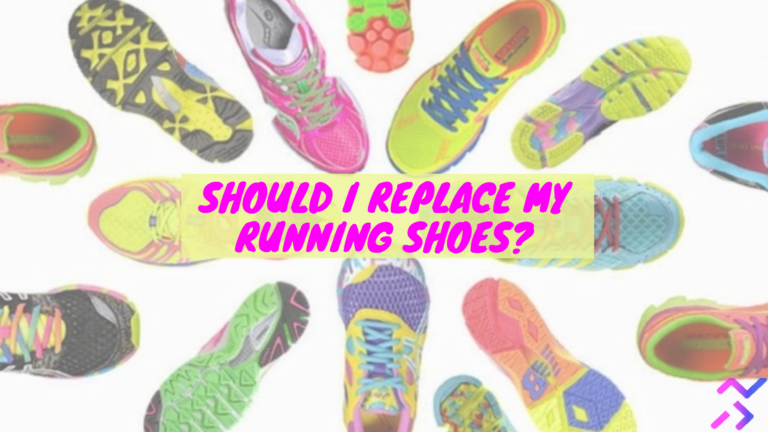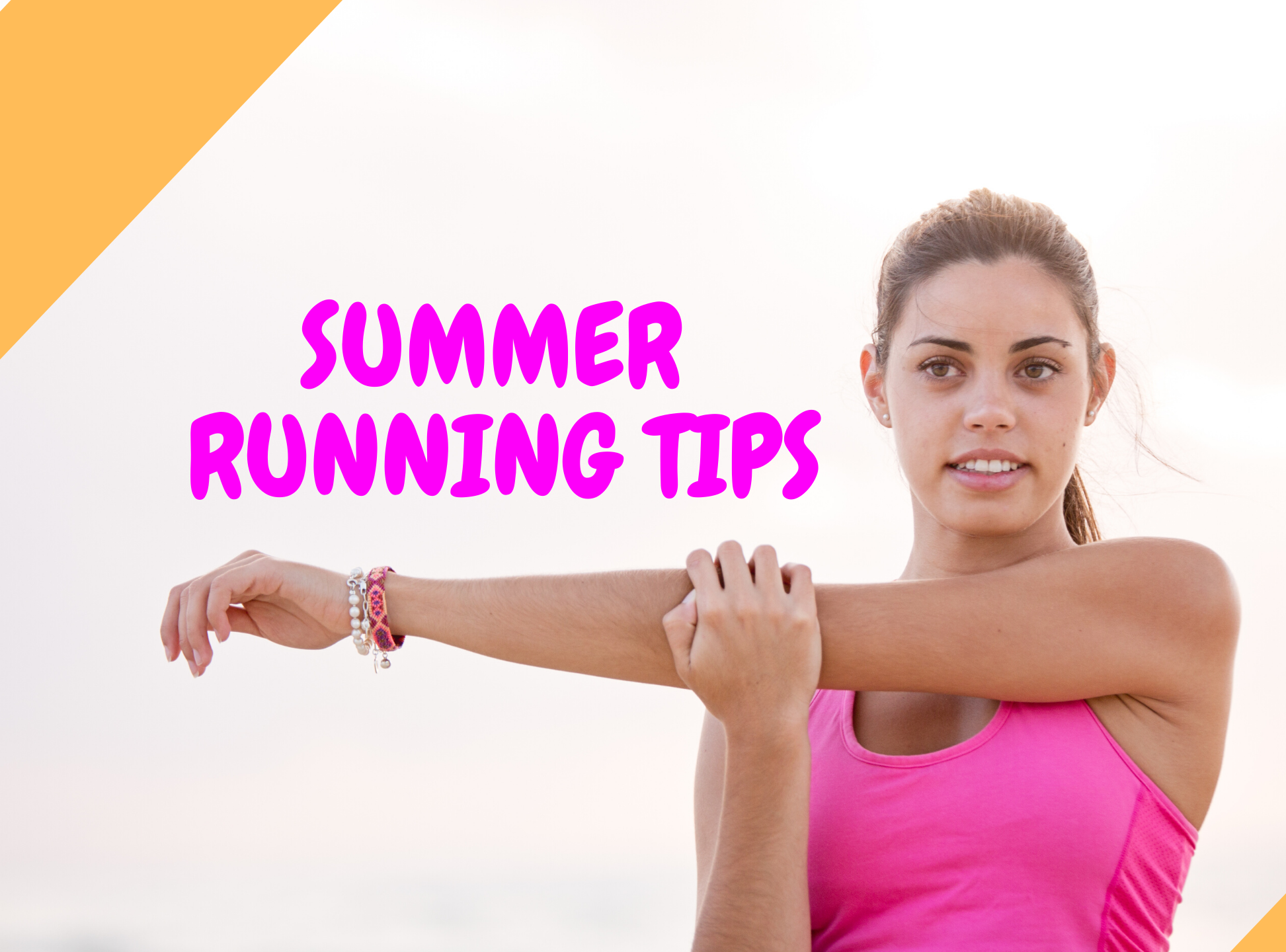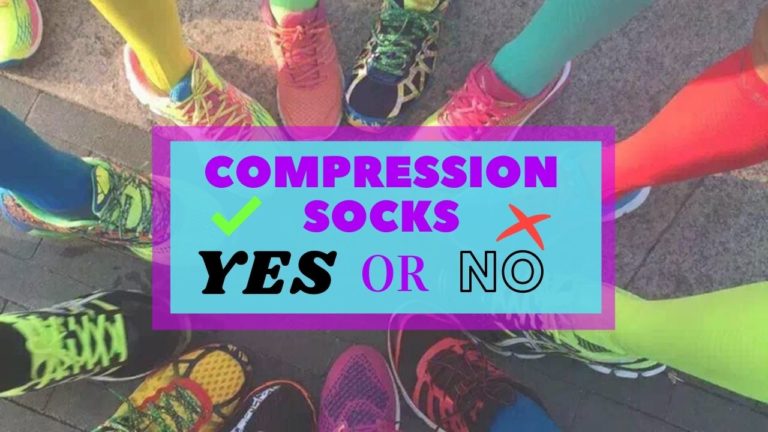Have you ever stopped and looked at the bottom of your favorite pair of running shoes? Thinking “should I replace my running shoes?” Do they look a bit different from when you originally picked them up at the store? I’m sure they are far from that “new shoe” smell. Tread’s looking a bit thin, holes in the sides, or the heel’s coming apart? We’ve all been there and it can be hard to tell when… it’s time. Let’s look at the good, the bad, and the ugly of the life of a running shoe in this post:
How Long Do Running Shoes Last… Typically
How Do I Know When… It’s Time To Replace
Side Effects of Running on… Used / Abused Shoes
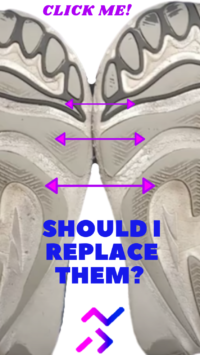
How Long Do Running Shoes Last?
On average, we have heard that shoes last between 300-500 miles when you're just using the running shoe as your go-to running shoe. 300-miles would be a great time to start turning that shoe over to see how the bottom is holding up. Many factors go into how fast a running shoe can wear
More on these factors can be seen below:
How Do I Know When It's Time To Replace?
- You can no longer see the tread marks on the bottoms in some areas. Some would call this balding
- The color of the tread has changed to the foam underneath as you can see in the above image
- If the middle (mid-sole) portion has significant wrinkles on the outsides = worn down and not supporting at its best
- Some refer to this material as EVA. You can learn more about such material in your shoes here
- If the heal cup of the running shoe starts scratching your achilles tendon or wearing out from all the on / offs
- You see holes on the sides or top mesh areas.
More information can be found below
Side Effects of Running on... Used / Abused Shoes
- Worn down bottoms can lead to improper foot striking which can cause injuries across your body
- High Level overuse or poor running efficiency injuries
- Stress Fractures / Plantar Fasciitis / Peroneal Tendonitis / Posterior Tibial Tendonitis
More information can be found below
- Stress Fractures / Plantar Fasciitis / Peroneal Tendonitis / Posterior Tibial Tendonitis
I’ve been running since I was twelve years old. Started in a pair of shoes from the local sporting goods store. Then as my passion grew, so did my understanding about the importance of a proper running shoe. These feet of mine have gone through the five finger minimalist phase, but are now floating high on some technologically advanced foam and support. Regardless of what shoes you have, each has souls, (Ha) and come with a lifespan of doing their BEST job. So that brings up the question:
How Long Do Running Shoes Last… Typically
So please don’t let these numbers scare you. If you’re new to running and not yet counting miles, just focus on checking the bottoms of your shoes from time to time to monitor how the bottoms are wearing out. If you’re experiencing some pain, maybe it would be best to visit a local running speciality store and discuss with an expert directly on what types of shoes fit your running style / current endurance level.
On average, we have heard that shoes last between 300-500 miles when you’re just using the running shoe as your go-to running shoe. 300-miles would be a great time to start turning that shoe over to see how the bottom is holding up. Many factors go into how fast a running shoe can wear:
- Are you doing most training on a gravel / treadmill / pavement, with pavement wearing the shoe out the fastest
- How does your running efficiency (running form) look? How the shoe strikes the ground can change the lifespan
- Weight dictates support duration. Meaning shoes worn by a 130lb male’s can provide cushion and support a bit longer than a 230lb male’s pair of shoes
- How / if you wash your shoes. Practice Air Drying as the dryer heat can melt the glue which holds the shoes together
- What type of socks, if any do you wear while running? Do yo use compression socks
- If you tie / untie your shoes when using them. Shoes always tied, can significantly wear out the heel cup
We’ve had some of our more efficient runner’s in our community have 1,000 miles running shoes as the running form is centered around being light on the feet and more gravel / trail / treadmill training vs road running. So now that you have an idea of how long they can last, what should you be looking for on your running shoes before getting ready to say farewell?
How Do I Know When… It’s Time To Replace
I’m sure you’ve heard the phrase: All Good Things Must Come To An End? Well, the best part about finding that pair of running shoes that just “FIT” every single time you put them on is that you can purchase them again..!! Most running shoe companies will put out different updated models of a particular shoe but really you just want to find what fits you right and what’s comfortable to slap on day in and day out. Remember, it’s okay to let go of that pair you’ve had since freshman year of high school, because you can find another pair just like them.
Now, how does one know when a running shoe has had enough and it’s time to say your goodbyes? There are a couple key factors you want to pay attention to before laying them to rest or donating them.
- You can no longer see the tread marks on the bottoms in some areas. Some would call this balding
- The color of the tread has changed to the foam underneath as you can see in the above image
- If the middle (mid-sole) portion has significant wrinkles on the outsides = worn down and not supporting at its best
- Some refer to this material as EVA. You can learn more about such material in your shoes here
- If the heal cup of the running shoe starts scratching your achilles tendon or wearing out from all the on / offs
- You see holes on the sides or top mesh areas.
When in doubt .. Throw Um Out! (or donate them)
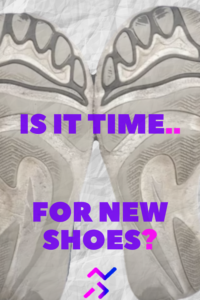
That last part’s really important. If you have to contemplate how used your running shoes are, or you don’t remember when you bought them, it may be “time”. Some would say that around 400-miles or so, you should consider a new pair and start shopping around. Our recommendation would be to try and find a new pair BEFORE parting ways with the current pair. We say this because it’s beneficial to slowly break in the new pair by walking in them first and maybe a day or two out of the week you’re running in them. Slow and steady transition will help avoid the injuries. Let’s see below the effects of overusing used running shoes can have on the body.
Side Effects of Running on… Used / Abused Shoes
When the comfort begins to disappear and the shoe’s just not giving you that love and support you knew upon purchase, it’s important to upgrade. When this doesn’t happen, your body can start to suffer as a consequence. Injuries may start to pop up and your overall running form might begin to suffer as the original, new-shoe support is no longer there.
- Worn down bottoms can lead to improper foot striking which can cause injuries across your body
- High Level overuse or poor running efficiency injuries
RACE2BFIT RUNNER’S TIP
Sometimes it’s best to have a couple different types of shoes for certain types of runs. That could mean you have one shoe you use more on the trails which is a bit stiffer and will really hold your foot and ankle. Compared to then having a shoe that’s light and fast for those speed-focused days. It can really help give your feet a fresh pair to hop into every day AND it gives the shoe itself time to recover to provide you the best support and cushion on the next time you lace up.
Wanting To Donate those used running shoes?
To donate your old shoes to the Reuse-A-Shoe program, simply drop your shoes off at any Nike or Converse store in the United States, or participating Nike stores around the world. You can also bring them to local running shops as some participate in recycling programs.
